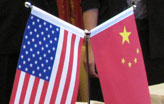Economy
Regulation key to better revenues
Updated: 2011-07-15 13:08
By Lu Hongyan (China Daily European Weekly)
Franchises will help in bringing about industry consolidation
Since the 1980s, the hair and beauty industry has become one of the most rapidly developing industries in China. At the same time, the industry is also confronted with problems of being frangmented and disorganized, which goes against the grain of a modern market.
It is estimated that in China, each person spends about $8 (5.58 euros) annually on hair and beauty service, compared to an average of $150 in developed countries. That in itself represents huge potential for the Chinese hair and beauty industry. The industry has also clocked annual growth of over 15 percent, with total revenue from all hair and beauty centers in China estimated to cross 500 billion yuan (53.9 billion euros) by 2015.
The industry's performance and potential have attracted a large amount of private capital, which accounts nearly 95 percent of the total.
It is still a budding business that needs to be guided and regulated.
The structure of the industry has been greatly optimized in recent years, but it faces myriad problems: Investment is usually small and premises are typically rented.
The relatively low threshold of the
industry makes it an easy business to start but because of that, it has attracted many unprofessional and unqualified hair and beauty centers. Employees are not conversant with hygiene levels and so laws and legislations may be tightened soon.
Another problem is the use of defective hair and beauty products. It is common for so-called famous brand products used in some hair salons to be false, which, in essence, is cheating for profit.
Consumers' rights are not protected partly because no testing authorities exist for setting uniform standards or requirements for millions of hair and beauty centers.
The entire industry is currently supervised by several authorities such as the industrial and commercial, tax, public health and quality and technical supervision authorities. The lack of proper coordination among these agencies makes it hard to thoroughly regulate the industry.
Apart from this, the quality of staff in the hair and beauty centers is not up to the mark. There is no real training system, and the standards at training centers are usually far from satisfactory. The typical method for a hairdresser or beauty therapist is to learn from a "master" as an apprentice, which greatly limits the quality of services.
But given the development of the hair and beauty industry around the globe, the Chinese industry, too, will see transformation. There will be more multi-purpose salons which combine hair and beauty services with gym facilities over the next five years.
In addition, franchise chains will gradually form so that the consolidation of the industry can finally be achieved and the business scale expanded.
Besides product or service centers, educational and training centers can also be absorbed into the franchise chains.
The author is a researcher at the Chinese Academy of International Trade and Economic Cooperation.

Specials

China-US Governors Forum
The first China-US Governors Forum is held July 15 in the Salt Lake City, the United States.

My China story
Foreign readers are invited to share your China stories.

Rare earths export quota
China kept its export quota at almost the same level as last year.